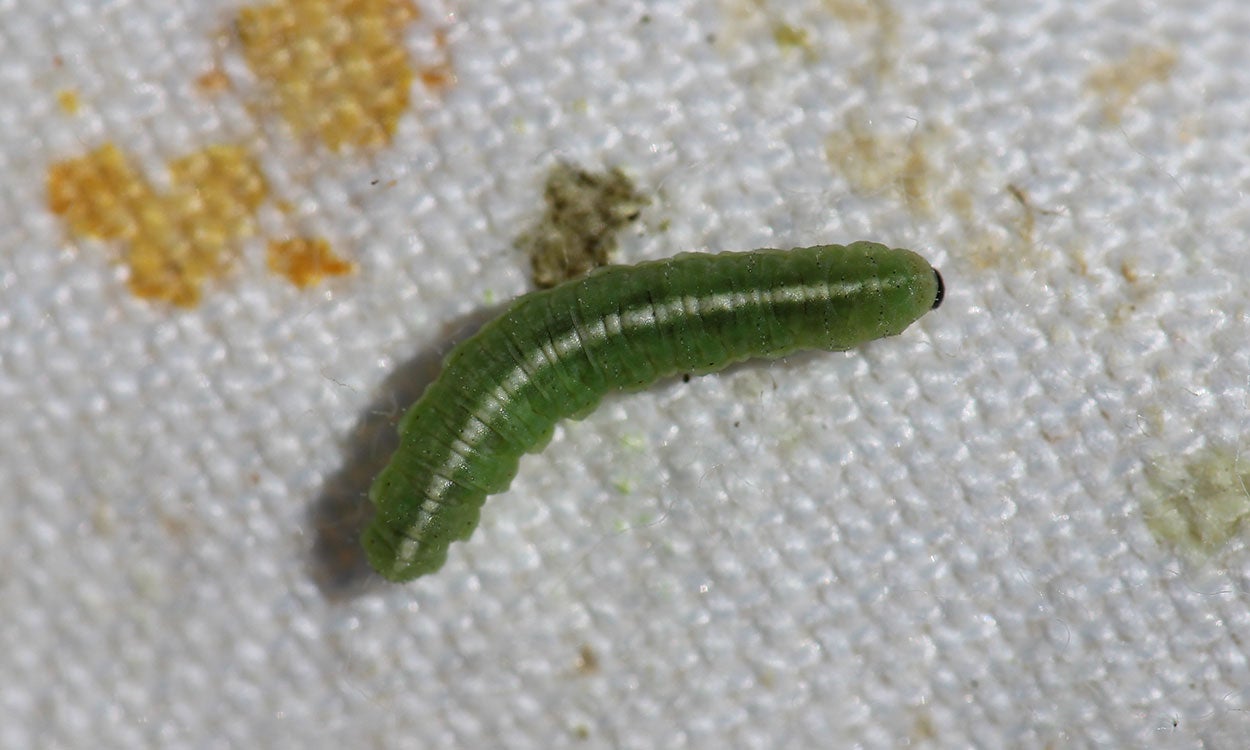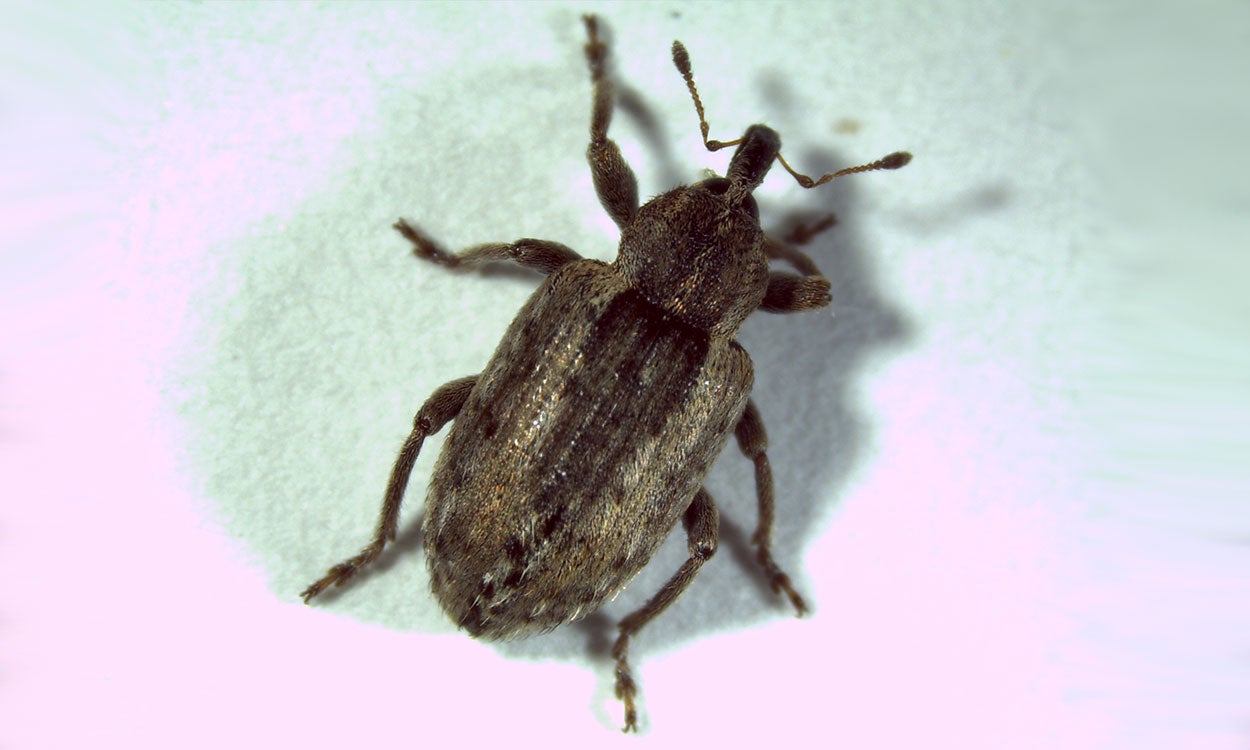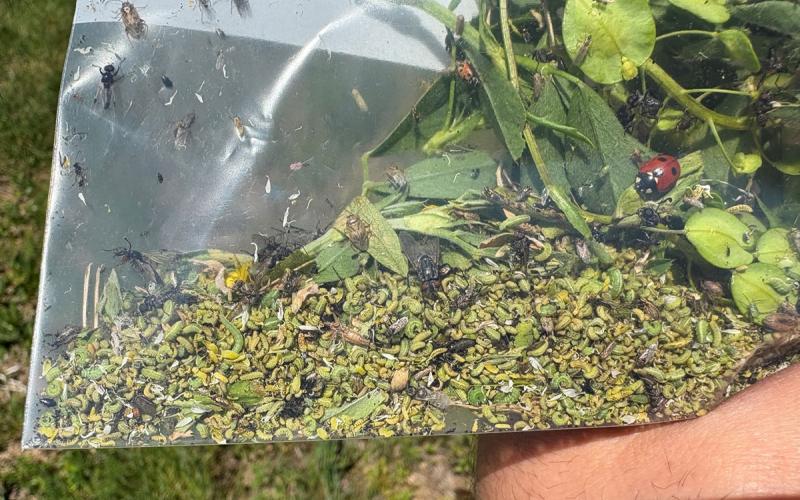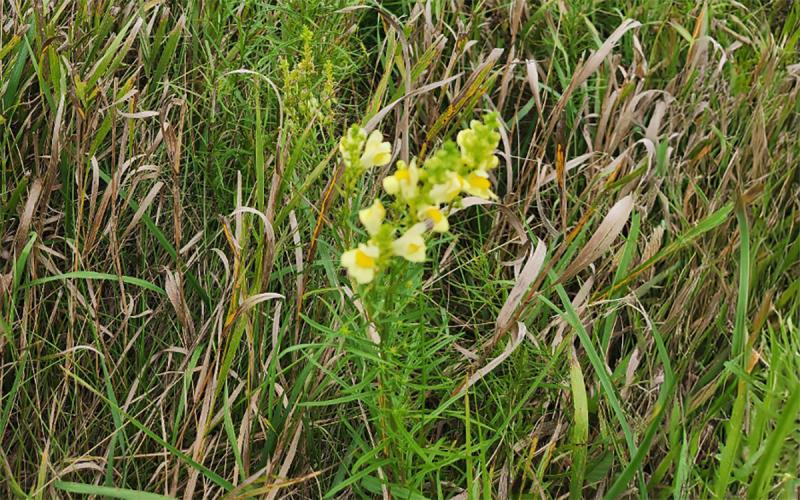Written collaboratively by Adam Varenhorst, Philip Rozeboom, Patrick Wagner, and Brad McManus.
Originally Submitted: May 8, 2023
With increasing temperatures, the degree days for alfalfa weevils have been steadily increasing. As much of the State has reached or exceeded 200 degree days, it means it is time for alfalfa weevil scouting to begin. During the last few years, alfafla weevil larvae caused significant defoliation in many alfalfa fields in South Dakota. The best way to prevent serious defoliation from happening is to scout and detect alfalfa weevil populations early. Although alfalfa weevils are generally more of an issue for the first cutting of alfafla, they can also cause defoliation after the first cutting. Populations should be closely monitored prior to cutting to ensure that large populations do not persist in the field and delay the regrowth for the second cutting.
Alfalfa Weevil Identification
The larvae of the alfalfa weevil are small, green and resemble caterpillars. They have a white stripe on their backs and a dark brown/black head capsule (Figure 1). The larvae will have three pairs of legs near their head. The adults are small, brown beetles with a darker brown stripe that runs down their midline. Alfalfa weevil adults also have an elongated snout that is characteristic of weevils (Figure 2).
Larvae

Adult

Scouting
The best way to determine if alfalfa weevils are present in a field is to use a sweep net and a five-gallon bucket. If you confirm alfalfa weevils are present in a field, the next step is to determine their population density. To do this, we recommend walking in a “Z” pattern and randomly sampling a total of 30 plants (for example, sample approximately 10 plants per leg of the “Z”). Each plant that is selected needs to be pulled out gently and then hit against the inside of the five-gallon bucket to dislodge any larvae that are present. We recommend this method versus trying to count the beetles and larvae on the intact plant, because adult alfalfa weevils will fall off the plant when disturbed as a defense mechanism.
Once completed, the plant should be measured to determine height, and the number of larvae in the bucket should be counted. Repeat this process until a total of 30 plants have been sampled. Lastly, calculate the average number of larvae and the height of the plants. Tables 1 through 4 contain threshold information for alfalfa weevils based on plant height and the number of larvae present.
Economic Thresholds
|
|
||||
|---|---|---|---|---|
|
|
|
|
|
|
| Value of hay per ton |
|
|||
| $60 |
|
|
|
|
| $80 |
|
|
|
|
| $100 |
|
|
|
|
| $120 |
|
|
|
|
| $140 |
|
|
|
|
| $160 |
|
|
|
|
| $180 |
|
|
|
|
| $200 |
|
|
|
|
| $220 |
|
|
|
|
|
|
||||
|---|---|---|---|---|
|
|
|
|
|
|
| Value of hay per ton |
|
|||
| $60 |
|
|
|
|
| $80 |
|
|
|
|
| $100 |
|
|
|
|
| $120 |
|
|
|
|
| $140 |
|
|
|
|
| $160 |
|
|
|
|
| $180 |
|
|
|
|
| $200 |
|
|
|
|
| $220 |
|
|
|
|
|
|
||||
|---|---|---|---|---|
|
|
|
|
|
|
| Value of hay per ton |
|
|||
| $60 |
|
|
|
|
| $80 |
|
|
|
|
| $100 |
|
|
|
|
| $120 |
|
|
|
|
| $140 |
|
|
|
|
| $160 |
|
|
|
|
| $180 |
|
|
|
|
| $200 |
|
|
|
|
| $220 |
|
|
|
|
|
|
||||
|---|---|---|---|---|
|
|
|
|
|
|
| Value of hay per ton |
|
|||
| $60 |
|
|
|
|
| $80 |
|
|
|
|
| $100 |
|
|
|
|
| $120 |
|
|
|
|
| $140 |
|
|
|
|
| $160 |
|
|
|
|
| $180 |
|
|
|
|
| $200 |
|
|
|
|
| $220 |
|
|
|
|
Management
If thresholds are exceeded, there are several insecticides available for management. Please refer to the latest Alfalfa and Oilseeds Pest Management Guide for labeled insecticides and their associated rates. If you observe a pyrethroid failure for alfalfa weevil management, please report it to Adam Varenhorst at adam.varenhorst@sdstate.edu.


